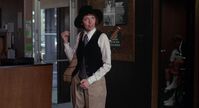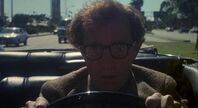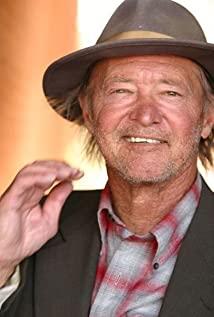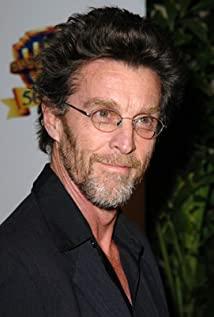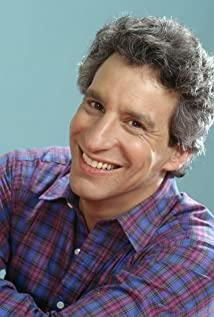If it is said that love is a high-level activity of human beings, and the person in love is endowed with magic, romantic, neurotic, and unprovoked like a woman, then everything must first be communicated and expressed through language. Novels and movies tell a story, which is a process of retelling and expression, and how to tell a love story well includes both content and skills.
If it is said that love is a high-level activity of human beings, and the person in love is endowed with magic, romantic, neurotic, and unprovoked like a woman, then everything must first be communicated and expressed through language. Novels and movies tell a story, which is a process of retelling and expression, and how to tell a love story well includes both content and skills. The director of "Annie Hall" uses rich expressive techniques, what he is trying to accomplish is a lonely love, a spiritual journey through modernity and postmodernity.
1. Postmodern Narratives: Fantasy in Love For first-time viewers of a movie like "Annie Hall," Alvey's (Woody Allen's) face-to-face speech and performance are novel and unique, breaking tradition." "Realism" in the film, the law that actors cannot make eye contact with the audience, appears abrupt, unfamiliar, full of performance and alienation. Natural and fun. After we heard two ridiculous jokes, this man kept defending himself, this strange man was always in a state of tension and self-argument, he faced the camera and understood that he was speaking to us, which was both a performance and a He expressed that he had lingering words in his heart to tell the audience, "...Annie and I broke up, I'm still worried about this, I always wanted to sort out the clues, pick up the bits and pieces of our relationship in my heart, review the Going on with my own life, trying to figure out what went wrong, you know, we were in love a year ago..." In quick words of humour and wisdom, we learn that this melancholy man has fallen out of love, and he and Anne It's been a year since we broke up, and the film is led by this man who knew he was being watched by the audience. Following the screen and following him, we witnessed his childhood anecdotes, his first acquaintance with Anne, kissing, quarreling and breaking up, all these bits and pieces The narrated scenes are not arranged in chronological order in the narration of the picture, and the logic followed is precisely along the fantasy logic of the "absent presence" as the leader, the viewer, and the narrator. Emotions emerge. For this man who is both exploring and telling a love story—Alvey is also a real-life director and starring Woody Allen—whose in-person telling is almost documentary, and for him, Both the Alvey in the film's story and the neurotic narrator strive to stay in line with the audience's position, creating a scene that is intimately told and truthfully told face to face. We know that as a narrator, a love story is an inevitable plan, and we often think about sharing it with others, and once as a narrator, we often get caught up in it, just like Alan, repeating it, this is a lovelorn The way to express anxiety is that after the other party has stopped loving behavior, we still live in the story unforgettable, tossing and turning, telling, expressing, expressing, lingering, and whispering, just like a neurotic living in our own world. If we still remember the narrative words in Duras' novel "The Lover" - "I am old", "This image, I often think of this image, I am the only one Movies like to set a narrator at the beginning of the film story, such as the aging Ryan in "Saving Private Ryan", the elderly Ross in "Titanic", Red in "The Shawshank Redemption", etc. Yes, the narrator of a classic film is only a setting on the plot, and the story is basically narrated according to the objective lens. "Annie Hall" tries to achieve the It is a kind of conscious flow, multi-level, carnival narrative effect. It can be said that Woody Allen developed the postmodern narrative techniques of the new French novels and films of the 1960s. The incoherent, fragmented and scattered narratives conform to their understanding of the world, and the narrators inside and outside the story constantly intervene. , so as to break a transparent fantasy. The incoherent and chaotic narrative structure is arranged according to the characters' fantasy. This is Jameson's description of the postmodern schizophrenia model. Through love, what we see is a The lost, broken, fragmented and flowing subject in love is a strong manifestation of Deleuze's "organless body". Elvie in the story does not understand why the relationship between the two in love is deadlocked, and does not understand why the relationship between the lovers has been stagnant, mutually exclusive, and lack of pleasure after a long time, and these can be caused by the narrator who is outside the story. Allen/Alvey realized it by writing plays and stories, realizing a desire, a pleasure, and an expression of desire. This expression runs through several levels of the text, so that the lost lover, The lost desire is temporarily sought back in the text to complete an emotional fixation. The text itself is full of subject consciousness like a lover, without logic, and the narrative of memory makes the text carry its own emotions, and the subject's sadness runs through the text. always. We can imagine that most of the film is in the fantasy of the narrator, Allen/Alvey, and the narration of Allen/Alvey at the beginning and end is true (if the truth here is placed in the outer layer of the text It seems that the outer narrator deliberately created it. The real narrator is the director Allen who mastered the camera lens. In the scene next to the male lead, Alvey's eyes moved, and then he faced the camera and said, "What do you think, this is the first movie of mine. You know that people always try to convey perfection through art, because the truth is The life is more difficult, and the interesting thing is that I did meet Annie again..." This scene Alvey reproduced the scene when he broke up with Annie. The interesting thing is that the story has been adapted by Alvey, and this is exposed to the audience. under the gaze, Later, Alvey's speech to the audience unfolded to justify his obscenity and fantasy, but this justification just revealed the truth of love, and the truth that art is a daydream satisfying the effect of desire under the theory of psychoanalysis. Telling in one picture, the narration of the text points not only to the story in the story within the text, but also to the story of the text itself. The director wisely expresses the absurd truth in life. In the end, the picture is a fragment of the conversation, listening, staring at each other, teasing, and playing with Annie in love. In the sad music expression, these medium shots are so real and profound, and the difference is that, Recalling the reunion with Annie later, the camera is far behind, and the picture is presented as a panoramic picture. The two people in the hustle and bustle of the world have become ordinary. Gradually moving away from each other, Anne's image fades away in Elvie's fantasy. This set of lens language adds a bit of warmth and tenderness to the sad story, and the strong and changing narrative gradually fades away, and the telling of the story ends here. 2. The subtext of temptation: split love discourse Apart from the revolutionary nature of the film's narrative, it is the humorous and interesting dialogues of characters in the film that make people laugh and make people laugh. What impressed Alvey was when he recalled the first match he met with Annie. After playing tennis, Annie's warm language was full of seductive subtexts - "You played well", "Did you drive?" ?" - the meaning behind these exclamations and questions is obvious, even "goodbye" is hesitant and irrelevant, we who have been in love know that Alvey attracted Annie in the story, Annie His words and deeds show a desire to respond, and from the previous section, we know that these are all narrated in Elvie's fantasy: our story begins with Anne who seduces and teases me first. It's the same with every narrator of love. What's great is the conversation on the balcony of Annie's room: Alvy: "So, did you take those pictures yourself?" Annie: "Yes, I'm just playing around with it, you know." with At the same time, this line of subtitles was displayed on the screen: "Just play? Listen to what you have to say, idiot!" Then, Alan: "It's a good shot, very characteristic" Subtitle: "You are a beautiful girl. Annie: "Yeah, I'd rather take a formal photography course." Subtitle: "Maybe he'll think I'm stupid." ... The two are talking about photography on the surface, but in fact every next word is hidden The other words, matched with the fast cross-cut shots of the picture, the dialogue between a man and a woman, and the underlying words hidden in the dialogue, are all presented, so we understand that the two are "talking" about love. Every sentence and every action of the two parties contains unspeakable subtexts. This way of expression expresses the psychology of the two parties in love for the first time. It is not so much the presentation of the picture as the desire of the narrator's fantasies. Present, just like adding a () after the words in the novel to indicate psychological words. Searching for the other party's voice-over in the surface meaning of the words. The other party's voice-over and his own voice-over are displayed on the screen at the same time, which is obviously inconsistent with the narrator's existence and can only understand the logic in his heart. Yes, then we know that the dialogue here and the voice-over here can be said to be all Elvie's imagination, just like the last scene of Elvie's fantasy drama. Lacan's mirror schema makes us understand that people always live in their own fantasy, that the dialogue between the subject and the object must pass through the barrier of "imagined self" and "imagined other", and the unconscious is the other. Discourse, the subtext of Anne's discourse in "I" understanding is perceived and captured by the unconscious of "I"/Alvey/Allen as the subject , this is the desire and unconsciousness of Alvey in the depths of his heart. It is not so much that Alvey attracted Annie, but it was the "I" in Alvey's narrative that attracted Annie. Objectively, it was Annie who attracted Annie. "I" attracted Alvey. In any case, according to Alvey's description, the two began to attract each other. Every word, every smile, and every action of the other party was like a path, leading to dozens of meanings if not ten thousand. Alvey does not understand the surface meaning of Anne's words, Anne does not understand the surface meaning of Elvy's words, the way the signifier of language leads to the signified becomes difficult, and as Roland Barthes said, " The process of signification is porn." Here, Annie: Code: "Hmm. To me, I mean...it's all intuition." = Message: "God, I hope he's not like everyone else Just like that, you end up being an asshole.” Behind the chaotic and illogical signification process is the looming, dark and twisting unconscious mind of the chatter. Wanting to express love means chaotic conflict with words, and even if language ambiguity makes communication between people a lot of obstacles, there is always a free and shared space for people who are in love and congenial. Like the pleasant, humorous conversation between Annie and Alvey, like they were walking on the beach and opening up about their past lovers, about how you felt about me, and finally, "Do you love me?" . Alvey said: "Love is a too weak word - I love you, I love you, I love you, yes I have to invent something." It is so difficult to communicate that a simple and ordinary "I love you" cannot express how special you are to me, and the intensity of my love for you makes the language lack the denoted boundaries of expression, from "I like you, but I don't want you to know directly. "To "I love you, but I don't know how to express it", the language is both ambiguous and stable, so that the subject of expression is always in the frantic process of choosing, defining, creating, and deconstructing language. No wonder those great writers describe love always fall into The state of excitement and madness is like the desperate letter of the young Werther, like Rousseau's confession to the youth in his later years, and like "Loving you is like life" in Wang Xiaobo's love letter. The important thing is that the writing context always attracts the two of them to each other. In the eyes of onlookers, it is always "they are in love". Different from Wong Kar-wai's "In the Mood for Love", which expresses the Chinese-style implicit and obscure subtext between men and women, Woody Allen's words in love are straightforward and humorous, and even create the skills of image expression, using the deformation of the image and the exaggeration of the characters' language. Shows the extreme division of love discourse. If Allen used the characters' words and subtitles to show us how the two parties in love imagined to communicate, then after the relationship between the two broke up, the words of the two were not speculative, the words were not expressive, and they were perfunctory. open screen to display. After the change of Annie's position promotion because of her singing talent, the relationship between the two also changed. We saw the scene of going to the psychiatrist together. The picture is divided into two parts. The psychiatrist asks the same question, The answer of the two was that they were separated by thousands of miles and complained to each other. The language barrier was like the wall in the picture, dividing the two into two, and the road after that was farther and farther, until the love disappeared. On the plane, the two had their own psyches, and Annie proposed to break up. Director Woody Allen uses two pictures to combine collage and voiceover to express the psychology of the characters, to show the difficulty of language communication between the two parties who are about to separate in love. It can be said that this is the arbitrary nature of language dialogue and communication. clever display. Wong Kar-wai shows the implicit and obscure feelings of men and women, constructing a scene without too much distortion of the picture, which is the stability of the picture's meaning. And Woody Allen wants to reveal the hidden meaning of language in love, he has to rely on the distortion, deformation, segmentation and collage of the picture. This is the director's effort to make the expression of the picture and the expression of the text converge. People's words are not speculative, their words are not expressive, and their perfunctory responses are displayed in separate pictures. After the change of Annie's position promotion because of her singing talent, the relationship between the two also changed. We saw the scene of going to the psychiatrist together. The picture is divided into two parts. The psychiatrist asks the same question, The answer of the two was that they were separated by thousands of miles and complained to each other. The language barrier was like the wall in the picture, dividing the two into two, and the road after that was farther and farther, until the love disappeared. On the plane, the two had their own psyches, and Annie proposed to break up. Director Woody Allen uses two pictures to combine collage and voiceover to express the psychology of the characters, to show the difficulty of language communication between the two parties who are about to separate in love. It can be said that this is the arbitrary nature of language dialogue and communication. clever display. Wong Kar-wai shows the implicit and obscure feelings of men and women, constructing a scene without too much distortion of the picture, which is the stability of the picture's meaning. And Woody Allen wants to reveal the hidden meaning of language in love, he has to rely on the distortion, deformation, segmentation and collage of the picture. This is the director's effort to make the expression of the picture and the expression of the text converge. People's words are not speculative, their words are not expressive, and their perfunctory responses are displayed in separate pictures. After the change of Annie's position promotion because of her singing talent, the relationship between the two also changed. We saw the scene of going to the psychiatrist together. The picture is divided into two parts. The psychiatrist asks the same question, The answer of the two was that they were separated by thousands of miles and complained to each other. The language barrier was like the wall in the picture, dividing the two into two, and the road after that was farther and farther, until the love disappeared. On the plane, the two had their own psyches, and Annie proposed to break up. Director Woody Allen uses two pictures to combine collage and voiceover to express the psychology of the characters, to show the difficulty of language communication between the two parties who are about to separate in love. It can be said that this is the arbitrary nature of language dialogue and communication. clever display. Wong Kar-wai shows the implicit and obscure feelings of men and women, constructing a scene without too much distortion of the picture, which is the stability of the picture's meaning. And Woody Allen wants to reveal the hidden meaning of language in love, he has to rely on the distortion, deformation, segmentation and collage of the picture. This is the director's effort to make the expression of the picture and the expression of the text converge. 3. Desire Frustrated: A Sad Love Story Woody Allen said in an interview that he originally wanted to name the film "Annie Hall" "Lack of Pleasure", considering the audience's acceptance, It was changed to "Annie Hall". This story tells about the love relationship between men and women, from mutual admiration to the loss of sexual attraction at the end, the lack of interest in each other, and the empty shell of love. What it wants to show is a story of love failure, a sad Story, and this theme, in connection with Woody Allen's other stories, is a constant theme in Allen's philosophical world - the absurd, sexually trapped, absurd tale of a man and a woman. It can be seen that Allen was greatly influenced by Freud. Most of the jokes and fun in the story are related to psychoanalytic theory. It can be said that this is the view of the world on love in the minds of New York intellectuals. After a set of words to explain the activities of people's hearts, our life is not better, but more confused and confused, and even ask a psychiatrist, who knows that most of the psychiatrists have psychological problems, which is the source of Allen's sadness. After the First World War, modernism began to turn to negative and pessimistic themes. With more emphasis on language forms and techniques in artistic works, language was regarded as the focus of artistic expression. Art was a unified whole of language, and this whole The theme of the performance is that the world is full of anxiety, sadness, loneliness, and despair. Jameson, an American cultural theorist, exemplifies Munch's "The Scream" and Picasso's "Guernica" to illustrate the symbolism of modernism. A holistic, in-depth, and historically meaningful exploration, then when we look at such an "Annie Hall", it seems to express the sadness in the world, and it also seems to symbolize the entire human problem, the frustration of desire, and the lack of pleasure, isn't it? Is the crux of the problem between all men and women. What about the movie's humor? We have to see the difference in Woody Allen, the transcendent humor behind his absurd, absurd view of the world, an attitude he was trying to convey. While showing his views on love, we also see this intellectual's self-seeking efforts to be liberated in language, how such efforts have been achieved and failed again and again, how to seek satisfaction in love but never satisfied, the whole movie What it shows is a mockery of finding meaning in love. It is a mediocre, flat, fragmented, and lacking in-depth expression of postmodern life. In the film, "God" is not so much a lustful lunatic. Rather, "God" is a humorous little boy.
View more about Annie Hall reviews



